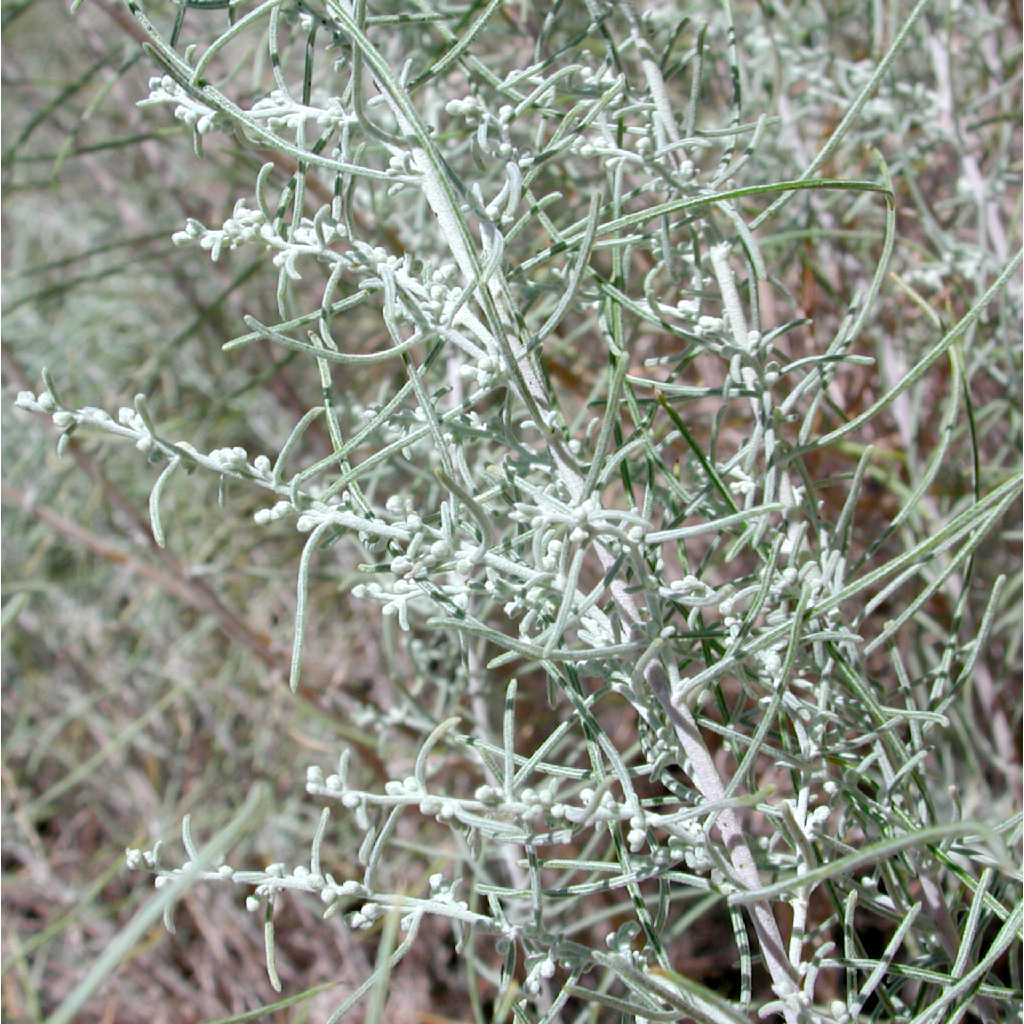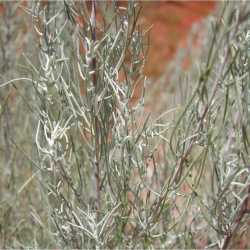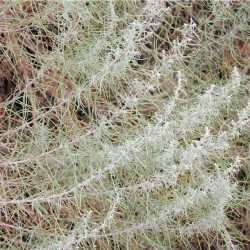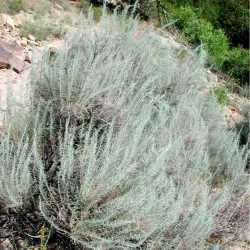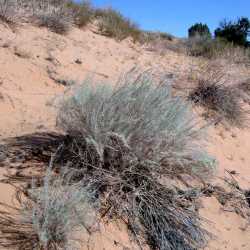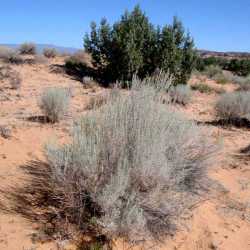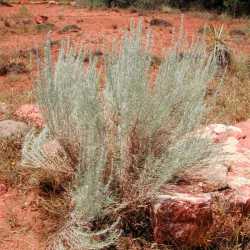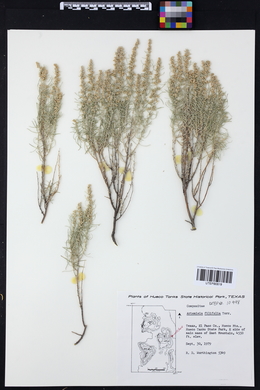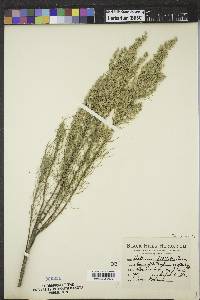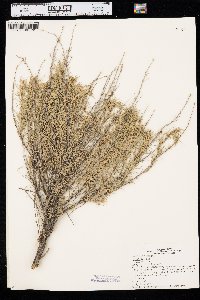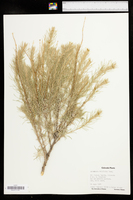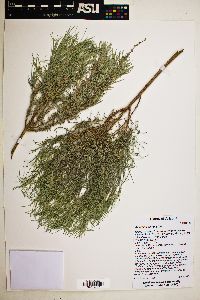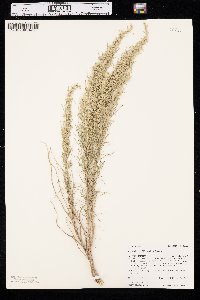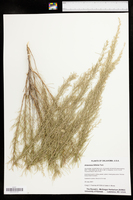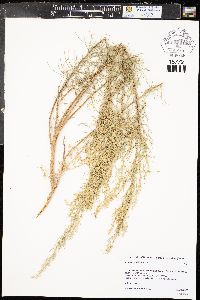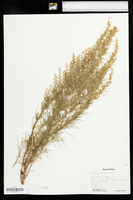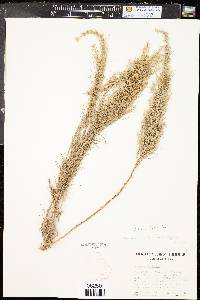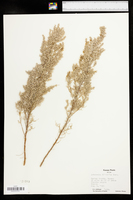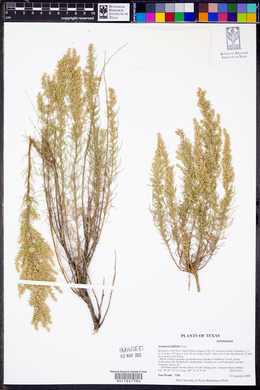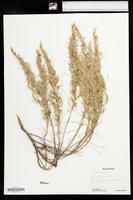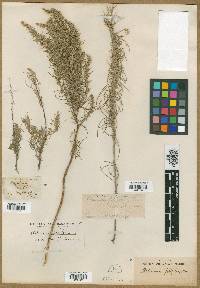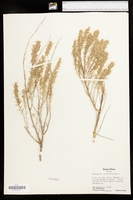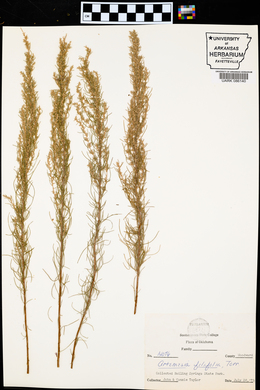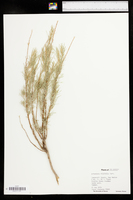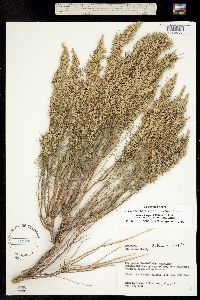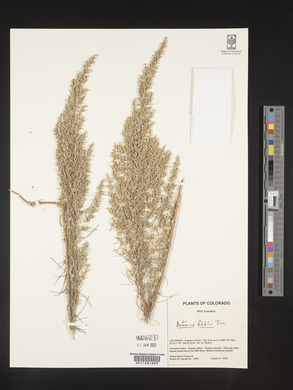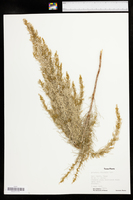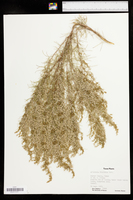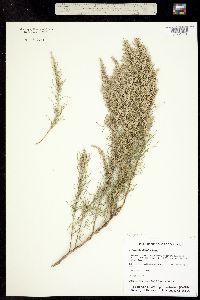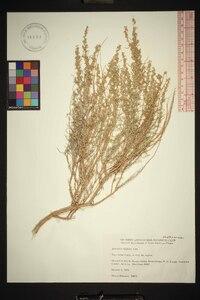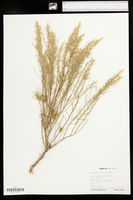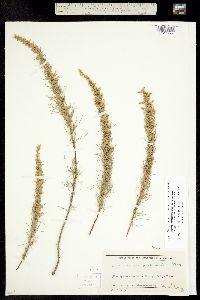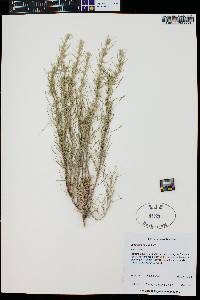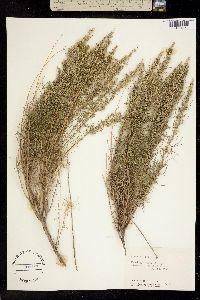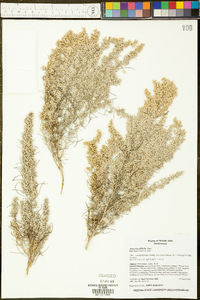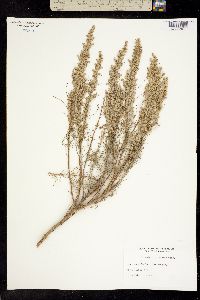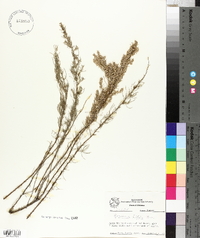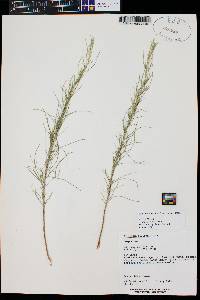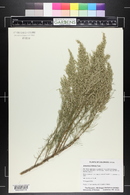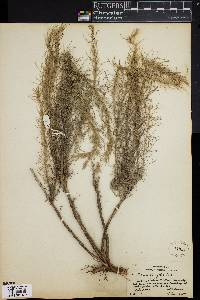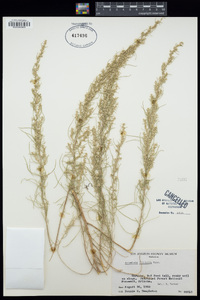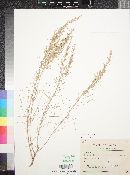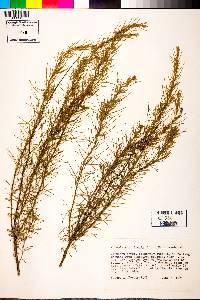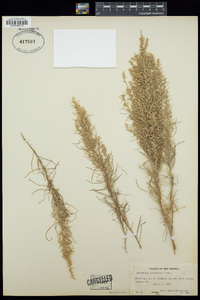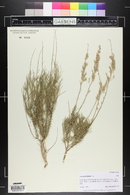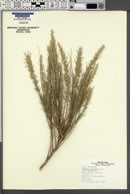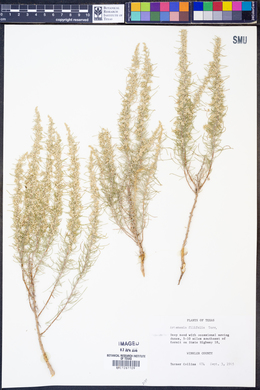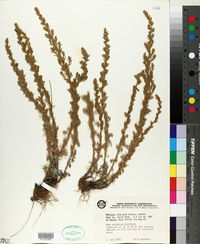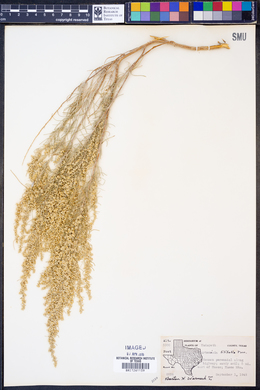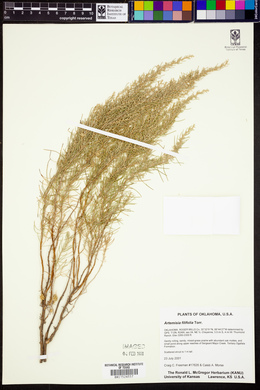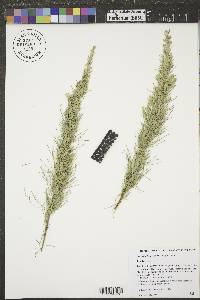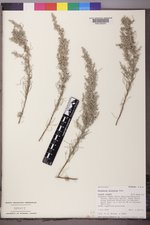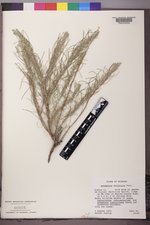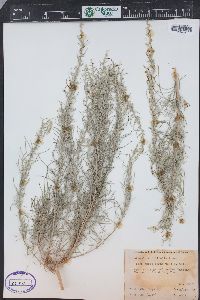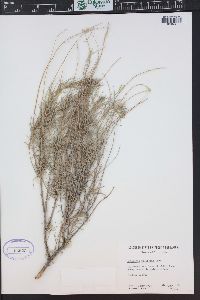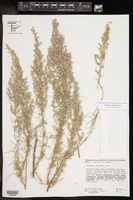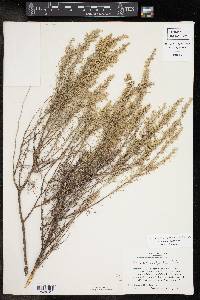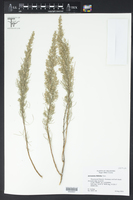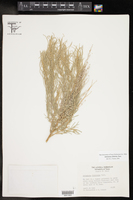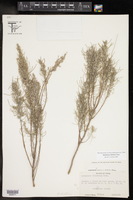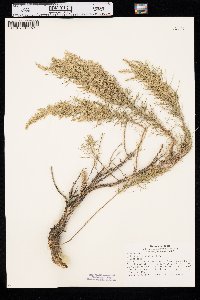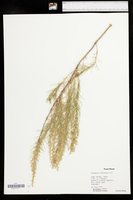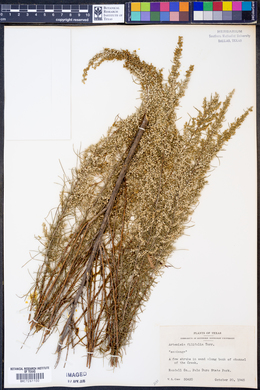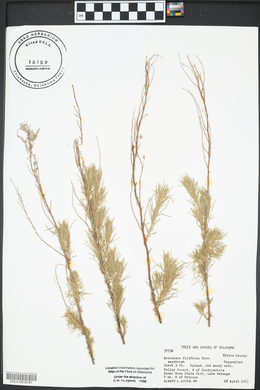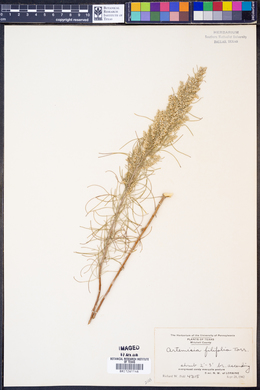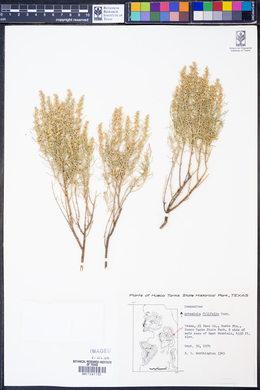
|
|
|
|
Family: Asteraceae
sand sagebrush, more...Silver Sagebrush, Sand sagebush, sandhill sage, silvery wormwood
[Artemisia plattensis Nutt., moreOligosporus filifolius (Torr.) W.A. Weber] |
Shrubs, 60-180 cm (rounded), faintly aromatic. Stems green or gray-green, wandlike (usually slender, curved, sometimes stout and stunted in harsh habitats), glabrous or sparsely hairy. Leaves gray-green; blades linear if entire, obovate if lobed, (1.5-)2-5(-6) × 0.1-2.5 cm, entire to 3-lobed, lobes filiform (less than 1 mm wide), apices acute, glabrous or sparsely hairy. Heads (mostly sessile) in paniculiform arrays 8-15(-17) × 2-4(-5) cm (branches erect to somewhat recurved). Involucres globose, 1.5-2 × 1.5-2 mm. Phyllaries (ovate, inconspicuous, margins scarious) densely hairy. Florets: pistillate 1-4; functionally staminate 3-6; corollas pale yellow, 1-1.5 mm, glabrous. Cypselae oblong (distally incurved-falcate and oblique), 0.2-0.5 mm, obscurely nerved, glabrous. 2n = 18. Flowering late summer-early winter. Open prairies, dunes, sandy soils; 500-2000 m; Ariz., Colo., Kans., Nebr., Nev., N.Mex., Okla., S.Dak., Tex., Utah, Wyo. One of the more easily distinguished of the shrubby Artemisia species, A. filifolia occurs in sandy soils and cohabits with species of Yucca, Cactaceae, and Salvia dorrii, the purple sage of western literary fame. Its filiform leaves and faintly aromatic foliage distinguish it from members of subg. Tridentatae.
FNA 2006, Heil et al 2013, Kearny and Peebles 1971 Common Name: sand sagebrush Duration: Perennial Nativity: Native Lifeform: Subshrub General: Rounded shrubs, 60-180 cm tall, with faintly aromatic herbage; stems green or gray-green, wandlike, usually slender and curved but sometimes stout and stunted in harsh habitats, glabrous or sparsely hairy. Leaves: Deciduous, alternate, sessile; blades gray-green, 2-6 cm long, linear to 3-lobed, the lobes filiform, less than 1 mm wide, glabrous or sparsely hairy. Flowers: Flower heads disciform, arranged in narrow panicles, 8-15 cm long by 2-5 cm wide, the branches erect to somewhat recurved. Involucre (the ring of bracts surrounding each flower head) globose, 2 mm long, the bracts (phyllaries) ovate, densely hairy, with scarious margins, containing 3-6 functionally staminate florets, those surrounded by a ring of 1-4 pistillate florets; corollas pale yellow, subglobose, 1 mm long, glabrous. Fruits: Achenes oblong, 0.2-0.5 mm long, obscurely nerved, glabrous. Ecology: Found in loose, sandy soils, in grasslands and dunes, from 4,000-6,000 ft (1219-1829 m); flowers August-November. Distribution: NV, UT, WY and SD, south to AZ, NM, TX, and n MEX. Notes: This is one of the more easily distinguished of the shrubby Artemisia species, occurring in sandy soils and cohabiting with species of Yucca, Cactaceae, and Salvia dorrii, the purple sage of western literary fame. It is set apart from other shrubby Artemisia spp. by its filiform leaves, which are often simple and linear, but can be 3-lobed; and its faintly aromatic foliage. A. frigida also has leaves with filiform lobes, but those leaves are highly dissected; the plant is usually smaller, mound-forming and the stems less woody; and it generally grows at higher elevations. Ethnobotany: Used medicinally for boils, indigestion, and as a snakebite remedy; also used ceremonially; and employed as a substitute for toilet paper. Etymology: Artemisia is named for Artemis, the Greek goddess of the hunt and namesake of Artemisia, queen of Anatolia; filifolia is from filiform, or threadlike, and -folia, for leaf. Synonyms: Artemisia plattensis, Oligosporus filifolius Editor: AHazelton 2015 |
|
|
|
This project was made possible in part by the Institute of Museum and Library Services [MG-70-19-0057-19].
Powered by Symbiota

